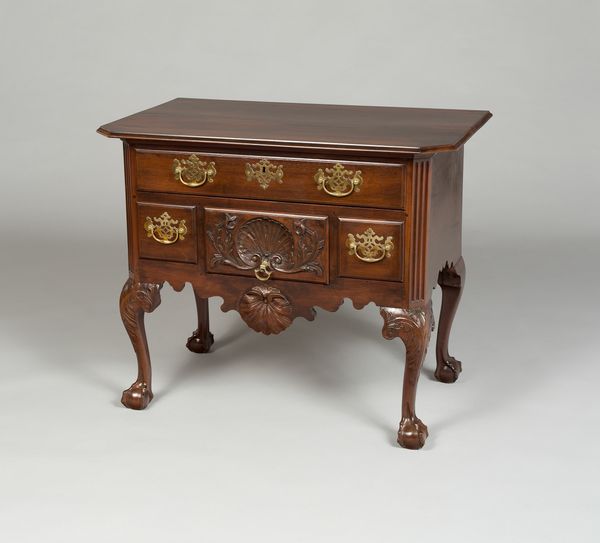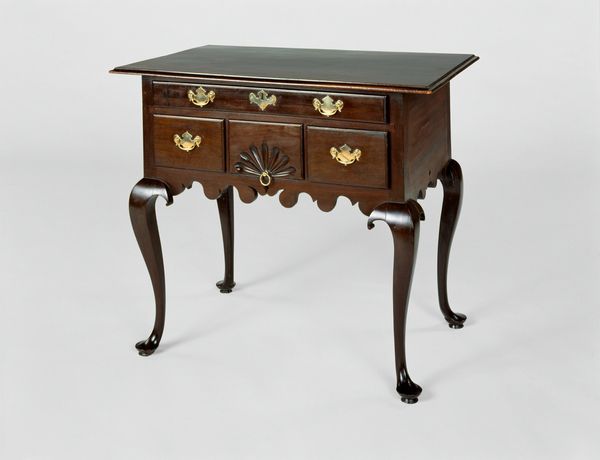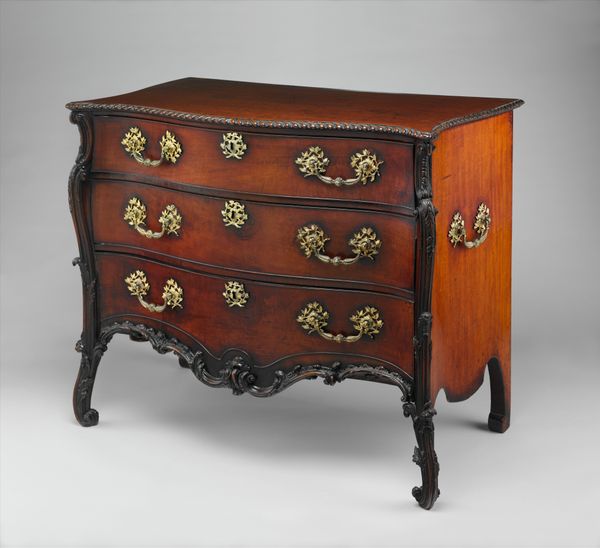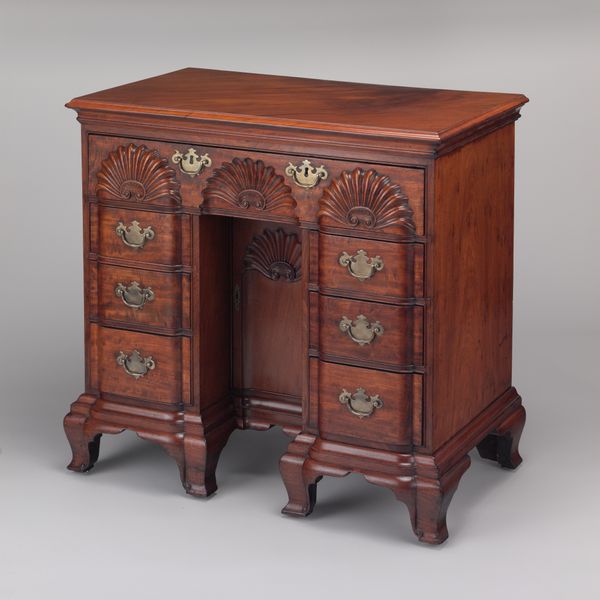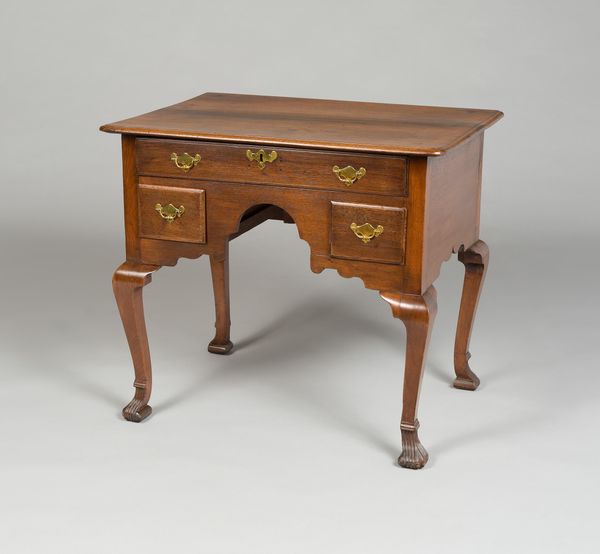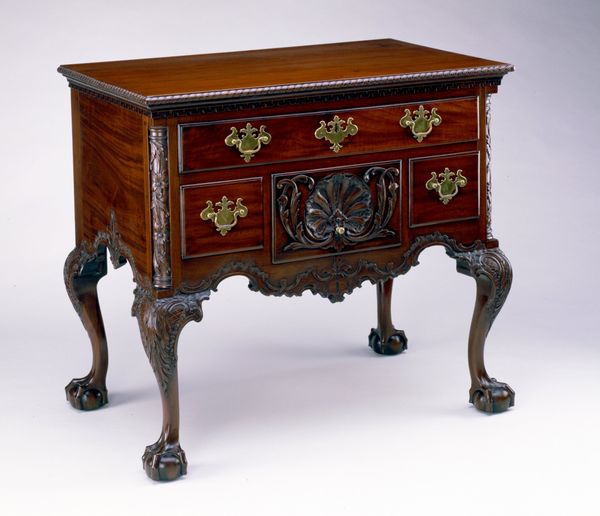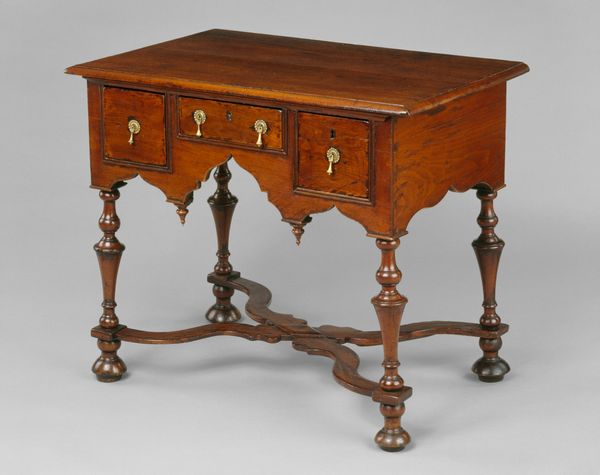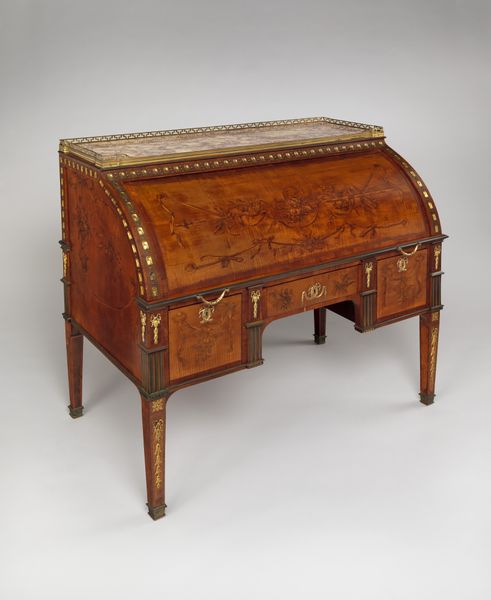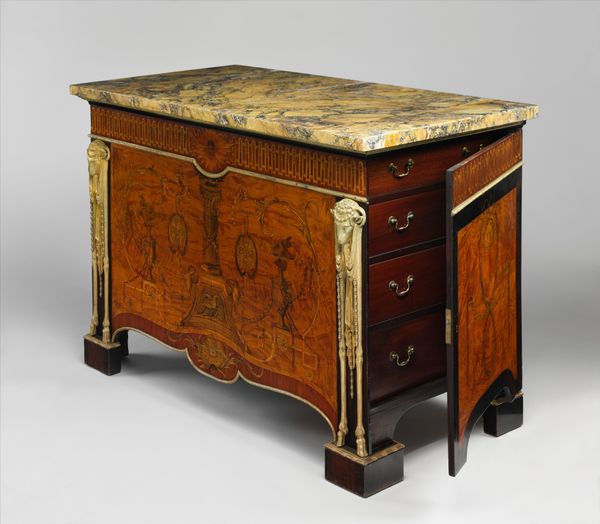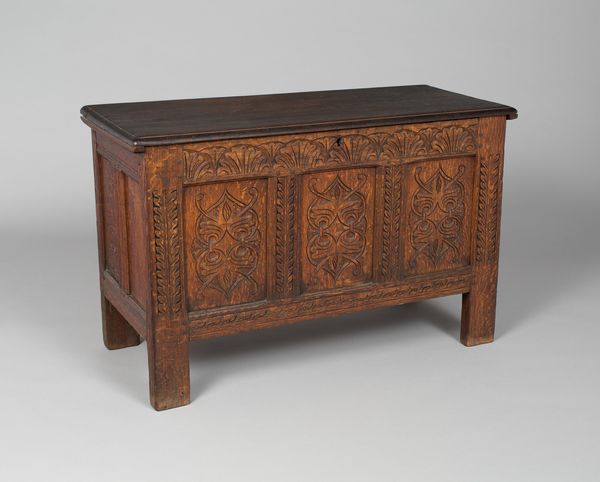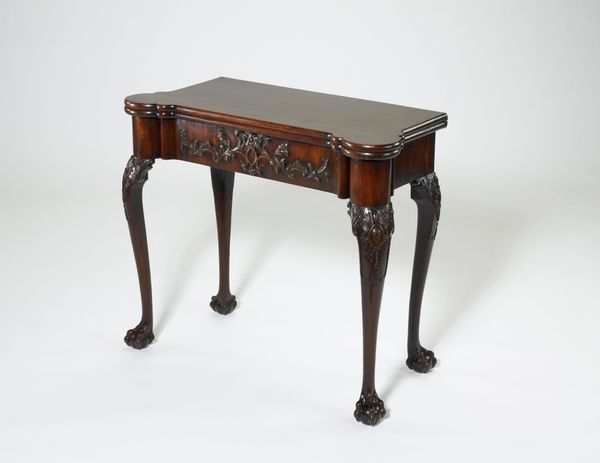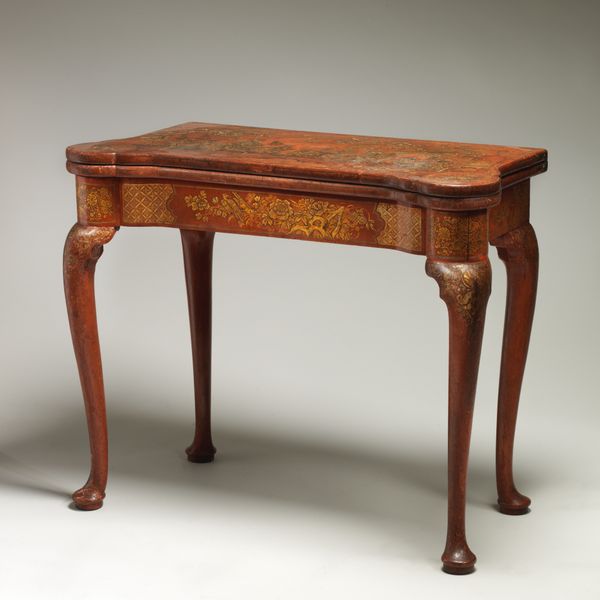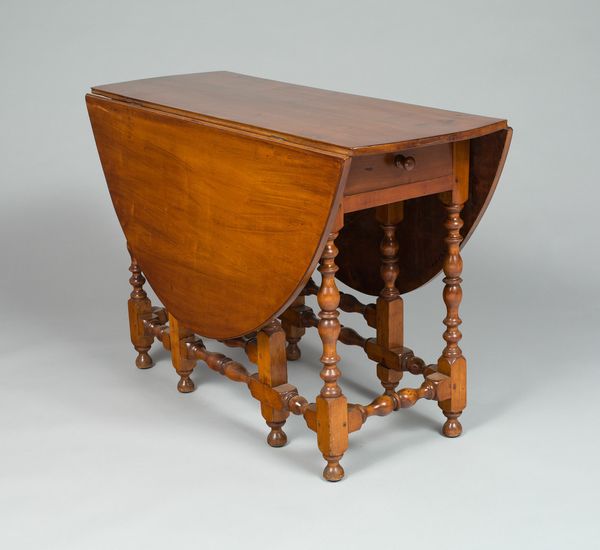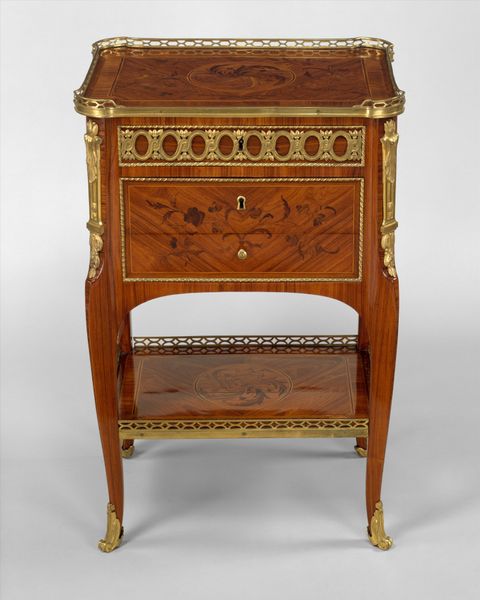
Dimensions: 73.8 × 88.3 × 54 cm (29 × 34 3/4 × 21 1/4 in.)
Copyright: Public Domain
Curator: We're standing before an anonymous "Dressing Table" crafted sometime between 1760 and 1790, currently residing here at the Art Institute of Chicago. Its primary material is wood, reflecting the Rococo style prevalent at the time. Editor: Wow, what a personality. I'm instantly drawn to the detail in those legs! They feel… alive. Almost like the table is about to scuttle away on some secret errand. Curator: The cabriole legs terminating in ball-and-claw feet are quite a signature of the period, signifying both opulence and the intricate craftsmanship demanded by the elite. Think about the skill involved in carving those details! Editor: Definitely someone's hands poured hours of artistry into this. I can almost feel the focus needed to chisel those tiny curves. It makes you consider the quiet solitude of the craftsperson. Who were they? What did they dream about while shaping these materials? Curator: Indeed. And this brings forth an important point, where did the materials come from? This "Dressing Table", or this furniture’s existence represents access to raw resources, skilled labour, a distribution network, and consumers with disposable incomes all interacting with the complex web of class. It is also important to see beyond style, the Rococo style is more than visual expression as its decoration represents material display for commercial and political dominance. Editor: You know, looking at it again, it almost seems contradictory, though: there's this formal, polished front concealing these drawers likely filled with unguents and trinkets, so personal. It's a stage for displaying a carefully constructed persona. Curator: Precisely! We're not merely observing an object, but an index to 18th-century social codes and aspirations. Its surface mediates interactions, and by examining it, we're better able to grasp some production dynamics and trade routes. Editor: I suppose it boils down to this: the dressing table serves as a reflective surface in a double sense—reflecting not only the face peering into its mirror but also reflecting the social milieu in which it existed. Curator: I concur entirely, and on that note, let’s consider moving on.
Comments
No comments
Be the first to comment and join the conversation on the ultimate creative platform.
